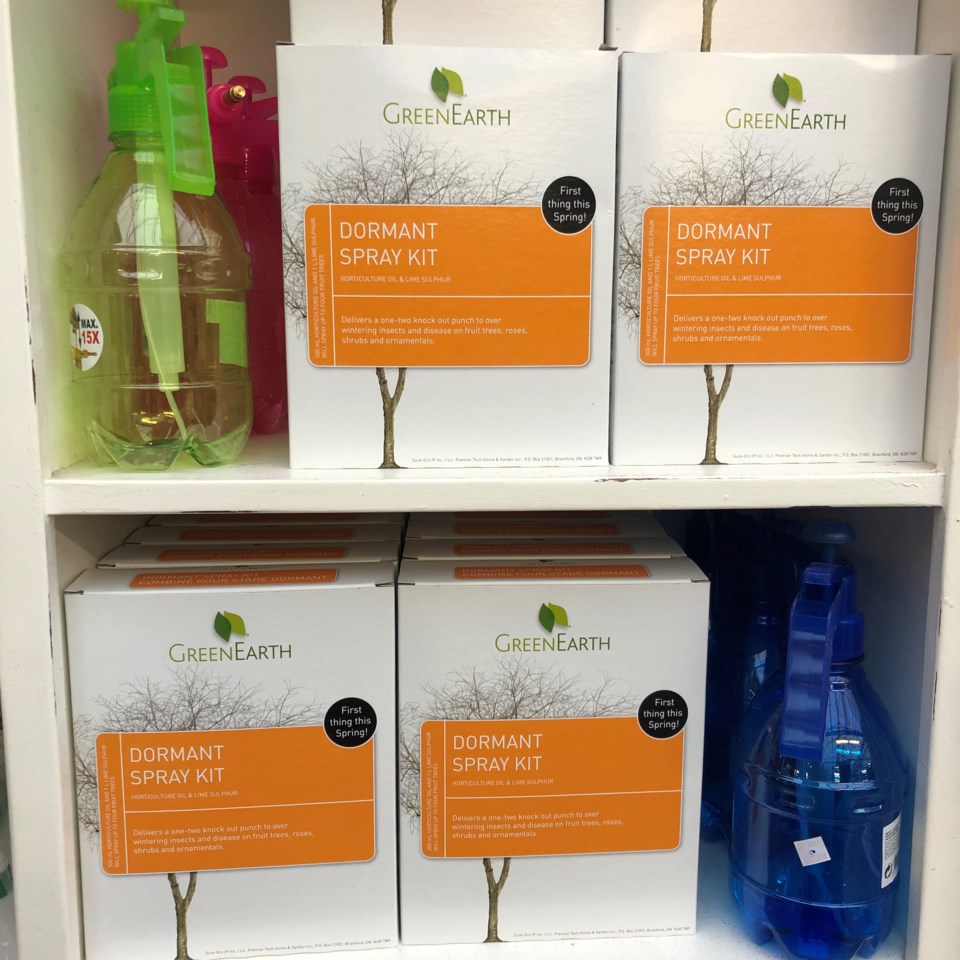The following column was submitted to the Tri-City News from Brian Minter — master gardener, best-selling author, Order of Canada recipient and co-owner of Minter Country Garden Store.
Dormant spraying is one of the most important winter tasks to keep most of our deciduous trees and shrubs clean.
Moss, algae, fungus, overwintering insects and disease will all take their toll during the growing season unless we take some action now. This is especially important because of the incessant wet weather all fall.
Done correctly, dormant spraying is one of the easiest and most effective sprayings you can do for your trees and shrubs.
It is mostly organic, very low in toxicity and safe for the environment. These preventive sprays control overwintering insects, disease and fungus which create so many problems. At this time of year, when there are no leaves on deciduous plants, the job is quick and easy. You may even wish to prune first to reduce the number of branches that need spraying.
My greatest concern, however, is that, despite good intentions, most dormant spraying is not done very well and as a result, is a wasted effort.
It is very important to use a pressure sprayer because it is more effective at forcing the spray into the cracks and crevices of trees and shrubs where dormant insects and diseases overwinter. Pressure sprayers also allow you to use far less spray, yet still do an effective job. In other words, the extra cost of a pressure sprayer will be recovered over and over again in both results and savings on the sprays needed.
The timing of your spray application is important as well.
Spraying before a rainfall or during freezing weather can often negate the results. You need at least eight hours of dry weather and above freezing temperatures after spraying for it to be effective. Usually spraying in the early morning, after the dew has dried off, is best. Try to choose a windless day to avoid any drifting.
When you mix your sprays, read the instructions.
Formulations are constantly changing for one reason or another, so always read the labels on the bottles. It is also a good idea to add some warm water to the sprayer before adding the spray. Mix well, then add the balance of the water to make up the correct proportion.
By the way, more is not better. Use the exact measurements recommended on the label.
When you have questions, ask the folks at your local garden shop. In BC, anyone who sells registered pest control products must have a provincial pesticide dispenser certificate. To get that certificate, they must write exams to keep up to date, and they can answer basic questions about home garden pest control use.
When you spray your trees, how much spray do you apply?
Some folks really dose their trees, while others just squirt a bit here and there. The proper method is to use as fine a mist as possible and to spray the bark until the spray begins to run down. It is called "spray to run off."
Keep the sprayer moving all the time, so all the bark is covered evenly. Concentrate particularly on areas where there are cracks or crevices as that is where the potential problems will be. If needed, use a ladder to get close to the branches. Don't stand back ten feet and set the sprayer to a coarse stream and expect it to do the job.
One dormant spraying will help but spraying two or three times is better. It is like getting algae off a retaining wall. One quick application won't do it. Three sprayings are necessary to do the job properly. Remember too: lime sulphur, horticultural oils and copper spray will stain white siding, so if you have roses or other shrubs against your house, slip a piece of poly behind them before you spray.
Although some labels neglect to mention it, maple trees do not like dormant oil or lime sulphur and avoid spraying lime sulphur on nut trees and viburnums, such as Snowball trees. Copper spray is a more effective control than lime sulphur for European canker and anthracnose, both having caused serious problems on apple trees. Peaches, nectarines and apricots always seem to suffer from peach leaf curl fungus and again, copper is one of the best controls.
Just as we wash and polish our cars to keep them clean and to remove road salt, please remember that our deciduous trees and shrubs need similar care. Shiny, clear, disease-free bark is a big asset to any garden, and it is a great start on organic pest prevention and control.
I know it’s early in the year and the weather is not the best, but a little protection now will make a huge difference come spring.





